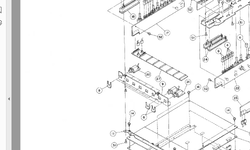T
The Groke
New member
Hi. Does anyone here know how to best tighten the input jacks on a Tascam 246. It seems that they are held in by a little bracket. A couple of mine are very loose. Is it just a matter of bending the brackets for more tension?
Also, has anyone here replaced these jacks with screw-on chassis mount jacks for greater stability? Seems like it could be an easy change, but maybe the plastic would crack more easily from the stress. Maybe a metal plate in back across all inputs for added support? Seems like there is room. Would love to here some opinions on this.
Thanks!
Also, has anyone here replaced these jacks with screw-on chassis mount jacks for greater stability? Seems like it could be an easy change, but maybe the plastic would crack more easily from the stress. Maybe a metal plate in back across all inputs for added support? Seems like there is room. Would love to here some opinions on this.
Thanks!

